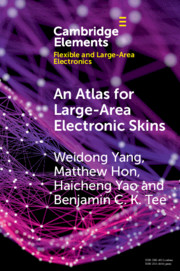Element contents
An Atlas for Large-Area Electronic Skins
Published online by Cambridge University Press: 15 September 2020
Summary
- Type
- Element
- Information
- Online ISBN: 9781108782395Publisher: Cambridge University PressPrint publication: 01 October 2020
References
- 6
- Cited by



